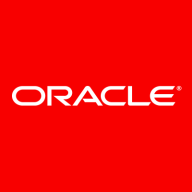

Red Hat OpenShift and Oracle Cloud Infrastructure compete in the cloud services and DevOps space. OpenShift appears to have the upper hand with its strong CI/CD capabilities and flexibility for cloud-native applications.
Features: Red Hat OpenShift offers robust CI/CD processes with ease of use, emphasizing security and automation. It supports container customization and environment management with YAML, Docker, and Jenkins, and provides scalability and multi-cloud flexibility. Oracle Cloud Infrastructure delivers a comprehensive suite of cloud services, including database management and high availability configurations, highlighting integration capabilities and data security tools.
Room for Improvement: Red Hat OpenShift users cite a need for improved documentation, more intuitive configuration templates, and better integration with third-party services. Enhancements in auto-scaling and troubleshooting tools are also suggested. Oracle Cloud Infrastructure faces feedback regarding pricing strategy, UI improvements, and better scalability and technical support response times.
Ease of Deployment and Customer Service: Red Hat OpenShift provides flexible deployment across on-premises, public, and private clouds, excelling in hybrid cloud models. However, its technical support receives mixed reviews. Oracle Cloud Infrastructure caters to public cloud scenarios, with a competitive edge in cost-effective hosting, but users call for improved interface usability and more responsive support.
Pricing and ROI: OpenShift's licensing is seen as costly, with additional features adding to expenses, though it offers high ROI through productivity gains. Oracle Cloud Infrastructure is noted for flexible pricing models attractive to start-ups and middle-market firms, offering competitive pricing for varied use cases.
With OpenShift combined with IBM Cloud App integration, I can spin an integration server in a second as compared to traditional methods, which could take days or weeks.
Moving to OpenShift resulted in increased system stability and reduced downtime, which contributed to operational efficiency.
It is always advisable to get the bare minimum that you need, and then add more when necessary.
Oracle support is very friendly and provided free of cost.
Having a contact point from Oracle Cloud Infrastructure (OCI) allowed for direct email communication.
Red Hat's technical support is responsive and effective.
I have been pretty happy in the past with getting support from Red Hat.
Red Hat's technical support is good, and I would rate it a nine out of ten.
There are no issues with Oracle Cloud Infrastructure's support for scalability demands.
The on-demand provisioning of pods and auto-scaling, whether horizontal or vertical, is the best part.
OpenShift's horizontal pod scaling is more effective and efficient than that used in Kubernetes, making it a superior choice for scalability.
Red Hat OpenShift scales excellently, with a rating of ten out of ten.
It provides better performance yet requires more resources compared to vanilla Kubernetes.
I've had my cluster running for over four years.
It performs well under load, providing the desired output.
AWS services typically offer more flexibility to end users.
Learning OpenShift requires complex infrastructure, needing vCenter integration, more advanced answers, active directory, and more expensive hardware.
Red Hat OpenShift's biggest disadvantage is they do not provide any private cloud setup where we can host on our site using their services.
We should aim to include VMware-like capabilities to be competitive, especially considering cost factors.
A 50% cost reduction compared to AWS was estimated.
Initially, licensing was per CPU, with a memory cap, but the price has doubled, making it difficult to justify for clients with smaller compute needs.
Red Hat can improve on the pricing part by making it more flexible and possibly on the lower side.
The cost of OpenShift is very high, particularly with the OpenShift Plus package, which includes many products and services.
Applications using Oracle Database not only work seamlessly on Oracle Cloud Infrastructure (OCI) but also benefit from a 25% offset on Oracle Database licenses.
Because it was centrally managed in our company, many metrics that we had to write code for were available out of the box, including utilization, CPU utilization, memory, and similar metrics.
The concept of containers and scaling on demand is a feature I appreciate the most about Red Hat OpenShift.
A valuable feature of Red Hat OpenShift is its ability to handle increased loads by automatically adding nodes.
| Product | Market Share (%) |
|---|---|
| Red Hat OpenShift | 11.6% |
| Oracle Cloud Infrastructure (OCI) | 6.9% |
| Other | 81.5% |


| Company Size | Count |
|---|---|
| Small Business | 33 |
| Midsize Enterprise | 20 |
| Large Enterprise | 53 |
| Company Size | Count |
|---|---|
| Small Business | 17 |
| Midsize Enterprise | 4 |
| Large Enterprise | 40 |
Oracle Cloud Infrastructure offers autonomous database solutions, flexible scalability, and seamless application integration, backed by strong security features. Its competitive pricing and multi-tenancy capabilities provide significant value for enterprises needing comprehensive cloud infrastructure.
Oracle Cloud Infrastructure delivers robust database management, frequent updates, and advanced storage and network services. It boasts global pricing consistency and broad accessibility, making it a preferred choice for hosting databases and migrating on-premises applications. Users in diverse sectors rely on its ease of use, particularly in hosting applications and infrastructure management. However, OCI faces challenges in documentation and integration with third-party services and seeks improvement in automation, support responsiveness, and regional availability.
What are the key features of Oracle Cloud Infrastructure?OCI is utilized by companies in sectors like gaming, finance, and IoT for hosting databases and ERP systems. Its robust infrastructure supports high-performance computing and application development, making it a favorable option for integration and analytics tasks. Enterprises benefit from its capability to migrate on-premises systems to the cloud, enhancing their operational efficiency.
Red Hat OpenShift offers a robust, scalable platform with strong security and automation, suitable for container orchestration, application deployment, and microservices architecture.
Designed to modernize applications by transitioning from legacy systems to cloud-native environments, Red Hat OpenShift provides powerful CI/CD integration and Kubernetes compatibility. Its security features, multi-cloud support, and source-to-image functionality enhance deployment flexibility. While the GUI offers user-friendly navigation, users benefit from its cloud-agnostic nature and efficient lifecycle management. However, improvements are needed in documentation, configuration complexity, and integration with third-party platforms. Pricing and high resource demands can also be challenging for wider adoption.
What are the key features of Red Hat OpenShift?Red Hat OpenShift is strategically implemented for diverse industries focusing on container orchestration and application modernization. Organizations leverage it for migrating applications to cloud-native environments and managing CI/CD pipelines. Its functionality facilitates efficient resource management and microservices architecture adoption, supporting enterprise-level DevOps practices. Users employ it across cloud and on-premises platforms to drive performance improvements.
We monitor all PaaS Clouds reviews to prevent fraudulent reviews and keep review quality high. We do not post reviews by company employees or direct competitors. We validate each review for authenticity via cross-reference with LinkedIn, and personal follow-up with the reviewer when necessary.